#alloftheabove is a dance piece about the artists' role in times of conflict, born out of personal moments of doubt and frustration. The making of the piece posed questions of empathy, responsibility, and privilege. It also wants to defend the artists’ freedom to not be defined by their affiliation with any particular cause, while acknowledging the existence of suffering. The process is presented here as collection of written and visual sources and conversations with colleagues. I will reference Facebook (FB) often, pointing out that, although social media is now normalized as the core of our shared experience as a society, two years ago, when I started collecting these ideas, it hadn’t occurred to me that it would become so much so. I became interested in the habits of exchange of information of a certain group of people as a reflection of such group’s expression of empathy.
Mexico
In August 2015, there was a post shared by Juanfran Maldonado, a friend from my hometown (Guanajuato, Mexico) with whom I haven't spoken in person in more than ten years. The post was shared from the ImpulzTanz Vienna Festival’s page, it was a picture of a printed letter, signed by “Members of the Mexican dance community”, which contained the following:
To the international arts community:
We are deeply shocked, hurt and angry about the torture and murder of Yesenia, Alejandra, Mile, Nadia and Rubén, in an apartment in the central area of Mexico City, this last July 31, 2015. This is not an isolated case, and it illustrates the escalation of violence across the country. The mathematics of terror under which we live add more victims everyday to the already thousands; people are murdered (close to 160,000 since 2007), disappeared (between 26,000 and 40,000), raped and abused in all kinds of horrifying ways without consequence. There is a pact of impunity signed by those who hold our government hostage of their interests. Neoliberalism has come to its purest form of cruelty in a situation like this. Bodies only matter as assets. The outrage we feel is very strong, and the strategies to face the facts are yet unknown. One of the victims, Nadia Dominique Vera Pérez was well known to many of us, she was our colleague because of her work as a producer and cultural promoter. She produced the Cuatro X Cuatro International Dance Festival in the city of Xalapa, Veracruz, crucial for the promotion and development of Mexican dance. . . . As an anthropologist, Nadia strongly believed in the arts potential for social transformation, and acted accordingly, Nadia practiced as well a strenuous political activity on behalf of human rights and freedom of expression, against the injustices of an oppressing government, and in solidarity with the victims, the dead and the disappeared of our country. More than once, Nadia expressed her fear: she felt watched, marked. More than once she was threatened because of her political activism inside the state of Veracruz. We find it very important to spread knowledge of her work and life, to talk about her, to highlight her identity, farther than just her picture of the idea of her broken body. . . . We need your help and collaboration. We need the entire world to talk about this, because it just cannot keep going on. We live in a Mexico in which more than 90% of crimes are left unpunished, in which state violence is exercised more cynically every time, in which the notion of justice itself seems to be inaccessible. Our country is falling apart, violence gets worse, and we are subject to a greater danger everyday. Nadia was a fundamental element for art in Mexico, for dance and as members of an international community that intends to be reflexive, sensitive and critical, we believe that we are in this together. No matter if we met her or not, if we had similar aesthetic interests or not, if we are Mexican or not, a member of our community has been tortured and murdered in a failed state. Nadia’s death concerns the art community all over the world. It concerns us all. International pressure is one of the few effective protection mechanisms. We ask you to speak out with us, and since many of you perform, speak, write, screen, show . . . we ask you to take a moment during your presentations to talk about the five. We think that it is important to talk about this in spaces open to direct effective exchange.1

Fig. 1 Screenshots from Facebook posts by Juanfran Maldonado, from left to right, a picture of Nadia Vera, posted on August 9, 2016, and pictures of the printed letter signed by Members of the dance Community posted August 15, 2016.
At the time of the killings I was in New York. That summer, with Dance to the People, we had procured some funding to support two choreographic projects over eight weeks. By August I was organizing a studio showing for the two pieces.
It was Dance to the People’s first showing with a dance party, we were at The Woods Cooperative in Ridgewood, Queens, and the M train was roaring over our heads, we had four boxes of wine, food, and good spirits, and, although I did stop for a moment to think about bringing up to the audience the request from the Mexican artists to spread the word about the killings (the words “We need the entire world to talk about this” resounding in my head), I couldn’t bring myself to do it. It just felt disingenuous, I felt no one had really come there to be preached, it would come out of the blue, facts, terrible indeed, but without context. So I didn’t do it. But it bugged me, because if Dance to the People, a project aiming to defeat consumerism (in our lives generally, but mostly in the dance scene), founded by a Mexican immigrant in New York City, didn't talk about this, then who was going to do it? So, in my mind I saved it for later.
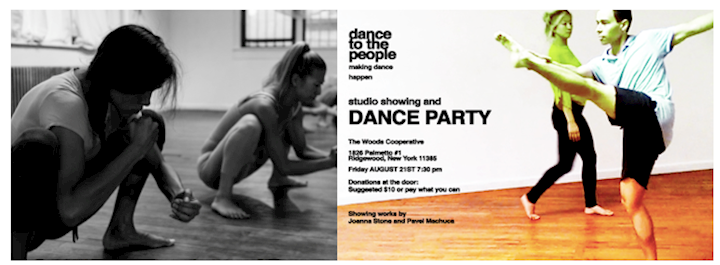
Fig. 2. Photo of the event by Casell Ferere of Joanna Stone’s Evolution is Not Anthropocentric, and flier of event.
Part of my hesitance to bring the subject up came from my reluctance to speak of myself from the “latino” platform, or the “immigrant” platform. There is a stereotypical narrative that comes with those labels that simply fails to reveal my personal narrative.
I speak as a Mexican immigrant woman, because that is what I am, but my work or mission does not contain any of those words, nor I am here to speak for “mexicanness", for immigrants or for women. On the other hand I do want to speak as someone informed on what is happening in Mexico, as a bilingual, bicultural person, and I want people in the U.S. to be better informed on the issues affecting those who did come escaping from real socio political and economic distress in Mexico, and to question the role of their own government in that distress (war on drugs, Plan Merida, NAFTA, etc.).
At any rate, the letter about Nadia wasn’t what started it all. The beginning of my mind drifting into asking myself whether I should go political started back in September 2014. Forty-three students from Ayotzinapa, Guerrero were taken by the police (after attacks that left other four students dead) and the government started trying to sweep the story under the rug. At the end, no one could possibly buy the government's version of the story, but so it happens that truth, facts or logic have nothing to do with how governments are run or how history is written.
This type of violence and impunity wasn't unknown to the Mexican people , and once again, we urged ourselves to not forget: #NiPeridónNiOlvido.
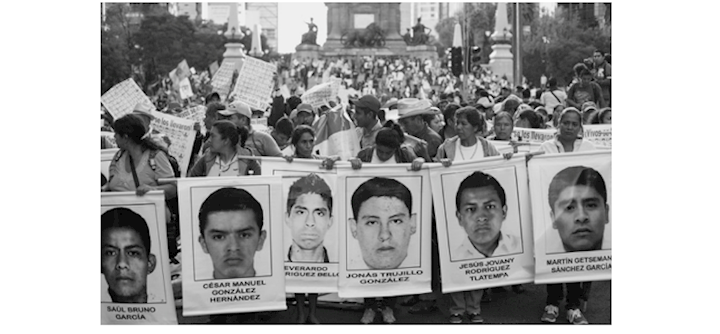
Fig. 3 Parents of the 43 march in Mexico City, holding pictures of their sons. Source: http://regeneracion.mx/padres-de-ayotzinapa-encabezaran-caravana-43-por-la-memoria-y-la-esperanza/
I had just moved back to New York when Ayotzinapa happened, and I had just started activities with Dance to the People, wanting to set in motion a different approach to how we make and consume dance. I found that the mechanisms by which dance artists compete for resources were detrimental to the quality and humanity of the products, and were not even effective at reaching new audiences or gaining true visibility. I was inspired by leftists movements back in the 1930s, such as the New Dance Group, by the fact that they could access free space at settlement houses, take class for a penny, and choreograph while learning Marxism.
I hadn’t posted almost anything in FB for a couple of years by then. But Ayotzi made me want to feel closer to Mexico’s pain, I figured the more involved I was online the more information I could access, and maybe I could also help the movement by spreading that information and joining my voice of discontent. There was very little press on the matter outside of Mexico, and even there, there was only the leftist newspaper La Jornada and Carmen Aristegui’s radio show, but not very many videos or editorials, or pictures of the protests. All of that was only on social media.
I went to protests here in NY. I yelled out for the first time “¡Asesino!” (murderer) against the president of Mexico, and it shook me inside, to actually yell it out in the street,
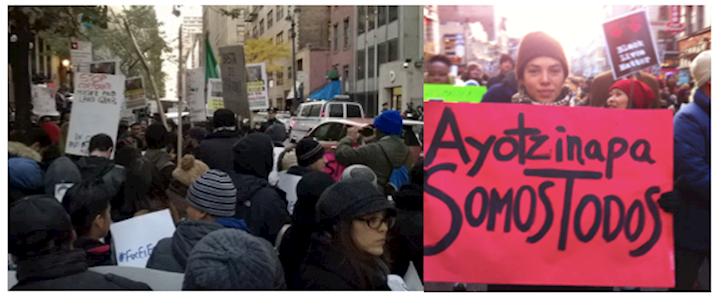
Fig. 4. From left to Right: Photo of protest outside the Mexican Embassy on November 20, 2014, and photo of me at the Back Lives Matter march in NYC, December 16, 2014
but it brought me great peace afterwards. We counted up to forty-three while walking from the Mexican consulate to the UN. We lit candles.
Around that time, I heard veteran NY choreographer Douglas Dunn talk about how he kept his politics outside his work. And I thought for myself, well, that may work. I didn’t want to make a piece about Ayotzinapa. I didn’t want to stage a dancing massacre. I may just be active in the streets.
Megan Minturn, dancer, in an email:
I've also confronted hesitations and questions, such as: when does work appropriate another person/group's struggle?; how can artists impact their audiences to not only have a meaningful experience, but respond to injustice?; what is the role of the artist in today's struggles for justice?; how does my personal artistry and voice fit into the landscape of both choreography and advocacy work?2
When I saw my family that winter I asked my mom if the country was finally getting ready for a revolution. Thousands of people had marched in Mexico City and they burned an effigy of the president in the Zocalo, I was proud of the support people could demonstrate against the shameless impunity of the government. She said, “No mija that’s only in Guerrero, the rest of the country doesn’t care”.
So there it was: world-views, values and limitations, those who have nothing left are the ones who are willing to do something to ignite change. But those who have nothing have no power to strike.
Nadia Vera was killed in Mexico city, nothing to do with Ayotzinapa, she lived in Veracruz, and was doing persistent news covering on the terrible deeds of the governor there. She knew she was being observed. They planned to kill her and her colleague at his apartment, and they ended up taking down other three women, one was the cleaning lady. In social media and protests they became “Lxs 5” (The 5), their hashtag, #justiciaparalxs5 or #NiNadiaNiNadie.
The fact that Nadia was part of the dance community made it feel like violence was hitting closer to home. The Mexican dance community, apart from participating in marches and posting things, sincerely felt that they could do something, affecting directly whichever audience they had in front. In that letter they ask to talk about it in “spaces open to direct effective exchange”,3 to “give voice to our grief, to the families, to many citizens”.4
As for FB, I wasn't the only one who had changed their posting habits. Except for only one Mexican friend who would post about the new makeup she had gotten, everybody else posted exclusively about things that were happening in the country, news, pictures of the solidarity other countries were showing for Ayotzinapa, and eventually, other things that had nothing to do with Ayotzi, but with any other social injustice: feminicides, corruption, education, and some clever memes to ridicule the political scene (it’s not like people lost their sense of humor). For a good year or so, I felt in social-media mourning. I couldn’t post about anything else, much less self-promotion.
So this made it a shock to see posts by non-Mexican friends, to see that we could be living two totally different realities. But then, other tragedies or events started calling for people’s solidarity. It was happening everywhere: hashtags (at the moment I had no idea what a hashtag was) calling attention to issues. People changed their profile picture to the French flag, just a few hours after the Paris attacks.
Discussion on Relevancy
Something grabbed me from inside. It wasn’t so much the sudden wave of solidarity to Paris, but the backlash the next day, for not paying attention to, say, Baghdad or Nigeria. People suddenly started climbing up a moral pedestal to judge other people’s tendencies to look more in one direction that the other. I saw people’s egos in their identification to other’s pain, people wanted to participate in someone else’s suffering. It was a war of hashtags. Our empathy or solidarity couldn't feel genuine, not at an age when news of suffering floods the system.
I, as an artist, was feeling irrelevant.
The acts of terrorism occurred in Paris, will be affecting our lives from now on. But what to make of the news? One day we learn about France, the next, that people are frustrated because there is suffering and attacks in other places, there's #Beirut, there's #Bagdad. I live in NY, and we're here standing with #PlannedParenthood and with #BlackLivesMatter. But I, Maira Duarte(…) am Mexican, and I'm also with #Ayotzinapa, and disgraced and depressed about the deep corruption and crime that rules the country that saw me become who I am. The bad news are numbing us, I can't find more empathy for #Guerrero, than the one I have for #Bucharest, or for #Charleston, or for #Nigeria, or for the #Syrian refugees. And as an artist I ask myself, once again, how do we make ourselves relevant when not making “political art". We have our own struggle. I'm trying to change the way we consume and produce dance in NY and resonating with artists around the world. And as an educator for children and youth, I’m trying to instill aesthetic values, that I believe will change the lives of young people and society for the better (more arts, less Nike). But, at the sight of such a world, where intolerance and hate and narrow-mindedness are hurting millions of innocent lives all over, you name it, where do we stand? We keep going because we need to, because we believe that this too shall pass, but should it affect our path? On the way we make art, should we radically come together and talk about our new goals, our new standards? Shall we make work only about achieving world peace? Tolerance? And do not make work about human psyche, tradition, form or rhythm until times of peace? I don't know. I think dance is political even when it's not. I think dancing is a rebellious act, because it doesn't serve any purpose but to exercise the mind and the spirit, and make believe... Anyway, I wonder. And I stand with dancers and choreographers around the world who might be asking themselves the same question: HOW DO WE MAKE OURSELVES RELEVANT? How do we show our love and support for those who suffer? How do we help change the course of things? I don't know. Social media, anyway is not the way, I'm sorry that a lot of us can only speak out here. Go meet people, dance with people, ask them.5
I then also remembered the time when Maree, a colleague, used the word irrelevant in a message she sent from Israel, back in 2014:
I am drinking in Gaga and getting ready to perform on Thursday with Hyun. We have had 1 siren alert at 2:30am where the "iron dome" intercepted rockets being shot from Gaza. The state of things there, unimaginable. Of course, it is such a different "vibe" in Tel Aviv from when I was last here and simultaneously, oddly, business as usual. We have all been talking about our conflicted feelings about being here with everything that is going on and at the same time, felt it was what we needed to do. Ohad gave a brief, touching welcome speech before our 1st class with him, warning us not to be fooled by the business as usual in Tel Aviv, that there is nothing "normal" about what is happening and that we need to remember while we are "safe" here in Tel Aviv, 40-80 km away war crimes are taking place. He explained how they grappled with continuing with the Gaga Intensive at all in the current state of things, but felt that in circumstances like this, a person can start to feel so irrelevant and that they decided by continuing with the intensive, they/he were making themselves himself relevant again, trying to bring something good, invite people to bring something good for their personal benefit and in turn benefit those they encounter. It was a teary morning.6
E-mail to collaborators on April 13, 2016:
Dance to the People has a slot on June 5 for Gibney’s showdown, and I'll be working on a piece for that, and I thought you might be interested in being a part of it. The piece will be about physical manifestations of artists combating to make themselves relevant in times of conflict. It’s the result of conversations I’ve had with colleagues over the past year more or less, and just a bubbling desire to say something about what’s happening in the world. Most of the process will be guided improvisations and solo work. We won’t need to all be together for the whole rehearsal time, in fact, I’d like to work in small groups and then put everybody together. I’ll be also collaborating with Benedetta8 Capanna, an Italian choreographer, via email, to exchange ideas. She’ll be working on her own piece on the same subject in Rome. I have no budget for the piece. But if this is something that interests you and you’ll feel that you’d benefit from this exploration, please come and play!7
Dancers who were down for it: Samsam Yung, Michelle Applebaum, Joanna Stone, Billy Schultz, Miu Soda, Ethan Meigs, Nicole Touzien and Megan Minturn. All of them had either danced, taught, choreographed or all of the above with Dance to the People in the previous year.
E-mail Exchange with Benedetta8 Capanna, Italian choreographer who had collaborated with us the previous year:
I’m going to start a new short piece . . . I want to make it a very physical, raw, and as nude as possible, dance experience. It might not be choreographed as much as guided as an open structure. I’d like to come up with a score for dancers to follow and let them travel through it. I’d like to flesh out these ideas: - The relevance of being an artist amidst political, social and economic conflict. - The experience of violence — not necessarily directly, as I don’t know anyone who’s been directly affected, but just by the constant bad news - The experience of numbness or other responses to constant violence I remember we also talked last year about exchanging movement ideas through email, and putting together a piece from that. I envision this as you recording yourself in an improvisation or short phrase, then I add to it, and so forth. I can then use material we come up together to make this piece, and you can also use the same material to develop a piece yourself, our pieces would look different, but they’d both be the product of a conversation.
. . .
Dear Maira, so glad to receive your email. We are connected because I was thinking lately of you and of this idea and I was thinking it can be a good way to exchange, explore, dialogue and share our feelings, ideas and experiences beyond words. I was just full of work (surviving sometimes is so hard!!!) . . . I have always thought about Dance more than political as social power and social treasure, that can go through different classes, ages and genders, a sort of subtle and deep connective tissue able to integrate and bring together human beings, allowing space for elaborations, thinking, meditation, evolution and even crisis. . . . I’m really tired of self-referential dance. Of course dance comes from our own experience and life, but I really think that we are just a channel. It's not about just us, but through us, like poetry, when the personal experience become universal. We are for Dance, more than dance is for us. . . . I’m happy you thought of this exchange. Life is hard everywhere. There is so much suffering and so much solitude. There are the immigrants and some European country want to close the borders. There are woman and kids that walk everyday kilometers fighting death, because fighting death is better that be in your country being sure to be killed. Every year I usually organize a benefit concert to raise money for some organization that work with children, or prisoners, or with people affected by some disease… I usually call some performers and musicians friends of mine and we make the event improvising together. This emailing dance can be the theme for the next one too! I still don't know this year where to do it and for whom, but you inspired me anyway! Thank you. For me dance is an offering, an act of love, an opportunity to make change. Benedetta8
I think that a big change in the world must go through us, women.9
Structures
I wanted a “naked dance”, for me that meant to not recur to my usual structure of scenes or moods, or to use props or costumes as means to get a message across. I wanted to keep it abstract, I wanted the body to just be a body. For the specifics, I would use recorded spoken word. Faster and clearer.
I knew I wanted to see bodies waking up, I wanted that to take time so that the audience could see the subtle shifts of the body. I wanted these bodies to wake up and recognize themselves, as newborns, born with a set of circumstances they didn’t choose, but through which they would judge the world from now on. They should be born together, but separate. Each inside their own house. So I thought of this:
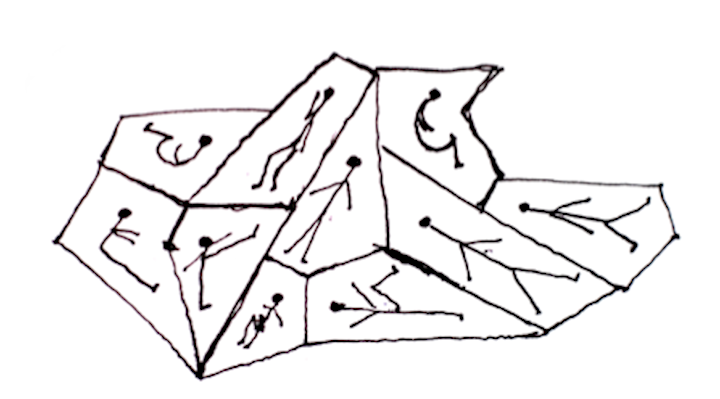
Fig. 5. Bodies inside their borders
Felipe Huidobro, a Chilean friend and artist, was in town visiting from Pittsburgh and I showed him my drawings. He had previously collaborated with dance/movement, so he got interested. The following week, we met in Pittsburgh and he showed me the leftovers of a project he’d made, some really nice pieces of cedar. He proposed the pieces to be jointed and flexible, we made one and I started playing with it. He gracefully finished 8 pieces in one week and sent them over to NY.
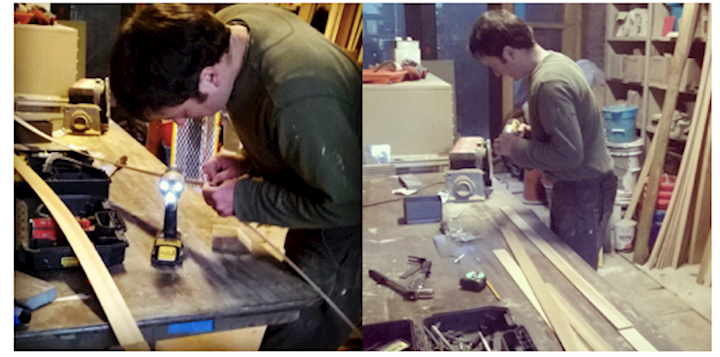
Fig. 6. Felipe Huidobro in his studio in Pittsburgh.
So it wasn’t anymore a “naked” dance. Now we had houses and structures to play with. I failed at being a purist. Nevertheless, the wooden pieces made it a symbolic dance, they could represent limits, borders, continents, houses, they could protect or cage their inhabitants. Dancers allowed themselves to be just bodies recognizing themselves, their space, recognizing one another through touch and force. They lean (or depend) on the wooden structures to extend their movement (and meaning) towards the space, the others, and the world.
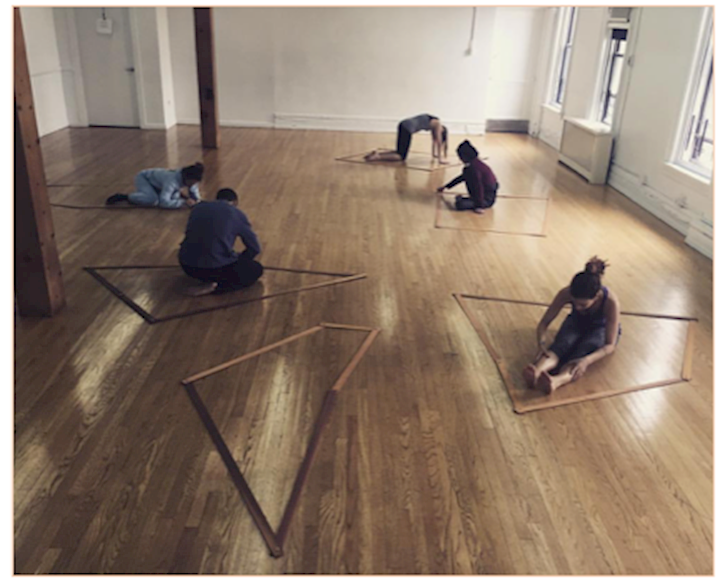
Fig. 7. From left to right: Miu Soda, Ethan Meigs, Joanna Stone, Samsam Yung and Michelle Applebaum, rehearsing at Brooklyn Arts Exchange.
Music
I found a beautiful piece of music by Arvo Pärt, and I started placing on it the spoken sound bites. I wanted movement to be abstract, but I didn't want the message to get lost, I was going to use very clear words to talk about the issue at hand. I think there are times when one shouldn't be afraid to be specific. Other art forms may laugh at this, but dance struggles with how and when to make sense; the body being something so concrete and we're the least understood performing art.
It wasn't difficult to find the sound bites. I started with an interview with Nina Simone. In it, Nina emphasizes that the artist has a duty, and that is “to reflect the times”, to be involved in politics, to “mold and shape this country”, to “not be molded and shaped”, for we really don’t have a choice as artists, especially at “this crucial time”, that is to her “the definition of an artist”.10 She was tough man! And though I agree with her sentiment, I don’t with her choice of words. First I don’t think there should be a duty, for artists need to be free. We can’t predict the value of work springing from absurd play. So, hell yes we should always fight to have a choice! “Reflect the times” is vague, but it does makes me think of whether the lack of social issues in concert dance nowadays, or how little dancers take on activists roles as performers or choreographers, is a true reflection of the lack of empathy of these times.
I added the voice of many issues affecting the U.S. such as minimum wage, the Flint water crisis, racial inequality, the ones affecting Mexico, using the voice of Nadia Vera, the students of Ayotzinapa, but also international issues, such as the irreparable contamination of the Rio Dolce in Brazil, the candidacy of Fujimori’s daughter in Peru, and the refugee crisis in the island of Lampedusa in Italy. I intended to saturate the audience with information and confront them with their confused sense of empathy. (See Appendix A for transcript of soundtrack.)
Discussions on Empathy
Interviews with dancers throughout the process:
BILLY SHULTZ: A state that comes to mind when Samsam is dancing, is feeling the necessity, the action, the state of turning care off. I'm still present, but I've turned empathy off. There's only so much I can do, so at a certain point, I turn it off.

Fig. 8. Screenshot from video. From left to right: Joanna Stone, Billy Shultz, Megan Minturn, Samsam Yung, Michelle Applebaum, Miu Soda, and Ethan Meigs. Work in progress showing at Gibney Dance.
ME: What’s the artist’s duty?
BILLY SHULTZ: I believe that artists can and should take pictures of dogs playing poker, create the Virgin Mary out of elephant dung, fart into a balloon, write romance novels -- do whatever they want. To say that an artist has a specific duty would be limiting, it would require adopting a specific moral system. I think the only universal moral structure is somehow related to empathy.
People who lose a child to a drunk driver tend to be involved in programs and push for policies that regulate against drunk driving. People that have their daughter kidnapped by militants will take action-- and it's likely that this person's friends will help out. Empathy ignites change. It's a serious tragedy that our society is as divided and walled off as it is. I feel like the city pushes me to a point where I stop noticing the sadness all around. I have to pay rent, I have to meet certain needs that provide me the level of life-satisfaction I need to get through my days with a level of happiness and meaning. What if anyone who has a certain level of happiness had a duty to experience something shitty so that they felt the duty to help?
NICOLE TOUZIEN: I’ve always struggled to see performance —dance, specifically— as a vehicle for activism. Human expression is grounded in social, cultural, and political contexts, therefore artistic work is inherently a product/reflection/rejection/conversation/controversy/etc. of the times. For this reason, I have never felt that it was the responsibility of the artist to concern him or herself with "making a difference" through his/her artistic process. The process of art-making in itself is a socially/culturally/politically-driven act. In fact, I believe that most art forms are lacking in ability to fully take on an activist agenda. Yes, dance (or other art forms) can spark conversations, elicit emotional/physical responses, inspire, motivate, etc. but it is limited in its service to effect social change.
Dancers Without Borders and other reflections
There’s Medicine Without Borders, Clowns Without Borders, could there be Dancers without Borders, can dancers save the day in a more concrete way?
The fiction of Dancers Without Borders, or How Postmodern Dance Saves the World:
As we all know, every day in rehearsal and performance, the dance community makes Los Angeles a better place. We prevent forest fires, deportation roundups, and earthquakes. We man1age to bring an average of five troops home from Iraq per day. Dance radically reduces greenhouse gases and alleviates Sig Alerts . . . And this week, in an astonishing act of artistic brilliance, we kept the Los Angeles Police Department from brutalizing yet another community, a group of peaceful protesters in MacArthur Park. A factual record of the event, aired on FOX, CNN, NBC, ABC and KPCC, follows: Late breaking News: Dancers without borders was deployed for a third time this week when police forcefully removed peaceful protesters from L.A’s MacArthur park during May day celebration. On the scene is eyewitness Jerry García. Jerry What did you see? “Well, Carla, they just swooped in, man, it was cool!… There were prob’ly like, I dunno, 50 of them and they were running in this V formation toward the riot Police. They totally danced circles around their asses, so fast the Pigs couldn’t even beat them with their batons… I think those cops are changed for good…Dancers Without Borders, man, they rock!” . . . I’m grappling with the disappointing fact that dance really doesn't affect some types of change, can’t stand up to some types of violence. Is that true or my own fiction? maybe dance is like taking a picture, it’s a response to an event. And maybe it’s about imagining another way. You know, envisioning a different life. And keeping our spirits engaged. I just don’t want be confused, to believe the fantasy that to dance is enough… or is it? And I wonder, how bad (or good) do things have to get before our concern for the world transforms into engagement? What kind of support would we need to not cower and run?11
MEGAN MINTURN: I feel like dance, especially as an ephemeral art, has to question its import and meaning as an existential quest more than other art forms. We frame the world by the questions we ask, and also give meaning to things through ritual, routine and social construction. In the same way that a $100 bill has no more inherent worth than a $1, our society creates worth and meaning where it bestows importance. Unfortunately, I feel that we frequently devalue dance.
ME: Does dance matter?
MEGAN MINTURN: Does my performance make a difference in the gazillion-year history of the universe? If I'm honest, no. (Though while choreographing this can be a liberating acknowledgement that allows me to play and make mistakes). Does my choreography prod people to think differently than they might usually? Does my dancing (and work for something intangible) question a capitalist obsession with profit? I think so. I would say yes, especially on good days.
BILLY SCHULTZ: Boko Haram is making me crazy, but there’s nothing I can do. Teaching in the schools is where my skill set lies, and my body is connected to this experience. I feel when I walk inside an all black neighborhood. I feel it in my body.
SAMSAM YUNG: Indirectly, my walking down the street, makes a difference just by my mere presence and vibe. “Matter", matter to whom on what level, socio-political, personal, or spiritual. It all matters to me, always.
BILLY SCHULTZ: I have, I wouldn’t call it guilt, because I haven’t been a dick, but I do notice privilege. I represent something that people give power to.
ME: If there’s a responsibility, it is to our own art form. Avoid making bad work. Do whatever is on our skill set to contribute to build a society that’s conducive to our own survival as artists, a flexible, sensitive society. No one else will do it for us.
Epilogue, does he have a choice?
The piece was first presented as a work in progress at Gibney Dance. There, our moderator, Amy Miller, said something along the lines of: "I was able to see humans, not just dancers... the spoken language opens up that possibility”. She also saw the “boxes” as limitations and saw these people moving across them and changing their shapes, therefore, she said, she felt hope, that we are capable of breaking out.
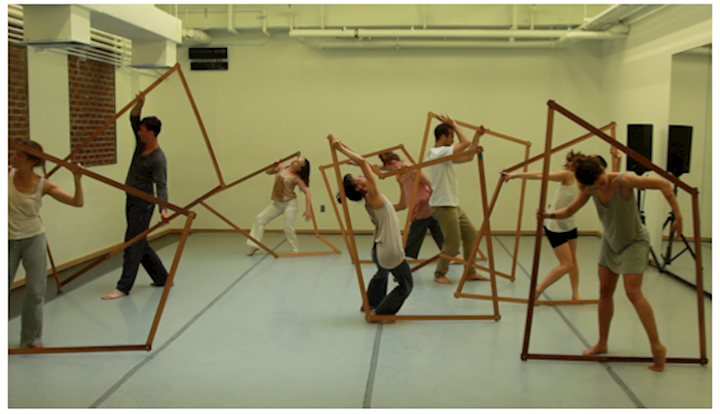
Fig. 9. Screenshot from video. From left to right: Joanna Stone, Billy Shultz, Megan Minturn, Samsam Yung, Nicole Touzien, Ethan Meigs, Miu Soda and Michelle Applebaum. Work in progress showing at Gibney Dance.
We also presented the piece at the Northside Festival, in Williamsburgh, NYC. That day, Sunday, June 12, 2016, America had woken up with the news that a man entered a gay club in Orlando and killed 50 people. We started to grapple with grief and the implications of the event. Guns, Islamophobia, homophobia and the approaching presidential elections were thrown into the cauldron. At the sight of an unending mesh of implications we were loosing ourselves into a sensation of powerlessness.
#alloftheabove intended to present an unusual combination of events, events that as of today, may seem irrelevant in comparison to the latest political scandal, feminicide, genocide. But I’m interested in still telling the story of this particular set of events, not only becasue the matter, but because there’s millions of people who didn’t have the luxury to move on to the next set of news. Also, we, as historical characters, matter. If we put ourselves in historical perspective, we will see that there was always something that shook our hearts in the past, and whatever it was, it made us who we are now.
In terms of the artist’s “duty”, my fight is to defend the artist’s “choice”. Ironically, after making the piece, colleagues invited me to present at forums intended for “socially-engaged” art, celebrations of artists who stand up against social injustice and the sort. I didn’t want that. I do not believe in an artisctic/moral hierarchy, where art that is intended to create social change is morally higher than art that is not. I believe that line of thought is dangerous, and by celebrating those categories we run the risk of creating impenetrable barriers within the art world.
A recent review of Kyle Abraham’s work by Joan Acocella, included the following lines: “Abraham has only one overriding subject, and, given the times, how could it be otherwise?. . . as a man of conscience he has less choice of subject matter than his white colleagues do. Good luck to him.”12 I believe we should be vigilant that the definition of our differences, of what makes us who we are, although it can be celebrated, does not become a cage. A black man being able to only make work about black suffering. A Mexican woman being only able to make work about Mexican suffering.
I simply believe, and champion, that regardless of the artist’s background, sense of responsibility or an agenda of identity, dance can always, through the physicality of the living body, exert a power that no other art form can. A body thrilled, in pain, in love, a body in bliss is able to bring those emotions directly into the audience. And then, there's the group of bodies, which power grows exponentially as you observe yet another human being joining in the dance. A group of bodies loving, searching, linking in arms, being lost, and being found, opening wounds in their flesh and exposing themselves as vulnerable and as powerful as they are. I believe the #dancerswithoutborders can at least (but not a small task) guide us back to our humanity.
#prayforPeshawar #Ayotzinapa #Atenco #BringBackOurGirls #JeSuisCharlie #YaMeCanse #Handsupdontshoot #TrayvonMartin #TamirRice #EricGardner #IStandwithPP #AguasBlancas #nãofoiacidente #lampedusa #NadiaVera #sunombreesFujimori #justiciaparalxs5 #Fukushima #miningkills #BHPkills #marchagainstmonsanto #FlintWaterCrisis #GuarderiaABC #BPgulfleak #yosoy132 #renunciaEPN #Acteal #Mosul #ChapellHillShooting #ivorycrisis #poaching #estupronuncamais #raisethewage #miprimeracoso #AyoreosdelChaco #represadeBelmonte #PulseOrlando
#alloftheabove
Appendix A
Soundtrack Transcript
Appendix B
The Movement Score
1. Juanfran Maldonado Facebook page, accessed August 15, 2015, https://www.facebook.com/JUANFRANMALDOW back to text
2. Megan Minturn in personal communication, italics added back to text
3. Juanfran Maldonado Facebook page, August 15, 2015, https://www.facebook.com/JUANFRANMALDOW back to text
4. Ibid. August 6, 2015 back to text
5. Maira Duarte Facebook page, November 15, 2015 https://www.facebook.com/submaira back to text
6. Maree Remalia in personal communication. back to text
7. Maira Duarte in personal communication. back to text
8. Benedetta Capanna in personal communication back to text
9. Ibid. back to text
10. This and the preceding four quotations are all from Nina Simone, “An Artist Duty”, YouTube video, accessed March 8, 2017 https://www.youtube.com/watch?v=0qL3nHvliN4 back to text
11. Sarah Leddy, “May Day in L.A., or I wish This Was Fiction”, Contact Quarterly 33, No. 2 (2008): 38-39 back to text
12. Joan Acocella “Kyle Abraham’s political choreography”, New Yorker January 2 (2017), 75 back to text
Works Cited
Acocella, Joan. 2017. “Kyle Abraham’s political choreography”, New Yorker (January 2): 75
Leddy, Sarah. 2008. “May Day in L.A., or I wish This Was Fiction”. Contact Quarterly 33 (2): 38-39
Duarte, Maira. 2015. Facebook. Accessed November 15, 2015 <https://www.facebook.com/submaira>
Maldonado, Juanfran. 2015. Facebook. Accessed August 15, 2015. <https://www.facebook.com/JUANFRANMALDOW>
Simone, Nina. “An Artist Duty”. YouTube. Accessed March 8, 2017. <https://www.youtube.com/watch?v=0qL3nHvliN4>